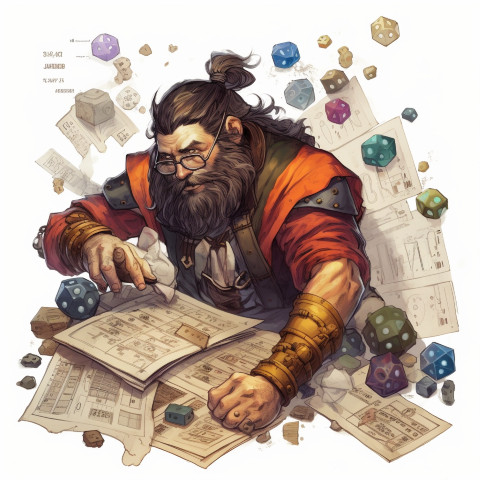Adventurers, gather ‘round the table as we delve into the often misunderstood mechanics of Advantage in Dungeons & Dragons 5th Edition. Introduced as a streamlined method of bonus handling, Advantage allows players to roll a second d20 and choose the higher of the two. On the surface, it seems like a boon to the dice-rolling hopefuls, offering a second arrow in the quiver of chance. But does it truly elevate the players’ prospects, or is it a statistical sleight of hand?
Let’s address the elephant in the room—the Gambler’s Fallacy. This is the mistaken belief that a second roll inherently increases the likelihood of a higher result. Players often fall victim to this misconception, envisioning that elusive natural 20 as just one more roll away. Yet, the truth lies in the principle of Regression to the Mean, which, stripped of its mathematical grandeur, implies that rolling additional d20s is more likely to yield a result closer to the average of 10.5 than the peaks of 20 or the valleys of 1.

Imagine the collective sigh of disappointment if, instead of rolling for Advantage, we declared, “Assume you rolled a 10.” Not very heroic, is it? And yet, statistically, that’s closer to reality. Yes, Advantage provides a statistical bonus, but its impact is heavily skewed by the Difficulty Class (DC) of the task at hand. Lower DCs see an outsized benefit, inflating success rates on tasks that already favored the player, while the effect diminishes as the DC climbs. At a certain point, other bonuses, such as Bardic Inspiration, outshine Advantage, offering more consistent aid against the steeper challenges that heroes should face.
This is precisely where the design of 5th Edition stumbles. By tailoring the system around a DC threshold that rarely exceeds 15, it inadvertently shackles Dungeon Masters, constraining the breadth of difficulty and tension that can be woven into the campaign narrative. We find ourselves in a narrow corridor of challenge, where the drama of high stakes is dulled by the statistical safety net of Advantage.
Moreover, the non-stacking nature of Advantage and Disadvantage further complicates the battlefield. Once you’re locked in the grip of either, any additional factors that would normally tilt the scales become null and void. The result? A disincentive for players to seek creative solutions or take dynamic actions in combat. Why strive for that high ground or cunning feint if your current state of Disadvantage negates any potential benefits? Conversely, why not throw caution to the wind with a whimsical tactic if you’re already basking in the glow of Advantage?
In my 2021 article, “Tools for Effecting Rolls,” I explored various mechanisms that can influence dice outcomes. The insights gleaned there are particularly pertinent when considering Advantage’s place within the broader spectrum of roll-affecting tools available to players and DMs alike.
For the mathematically curious, the granular details of Advantage’s statistical effects are laid bare in an analysis I’ve set up on AnyDice, which you can explore here. This model elucidates how Advantage impacts roll outcomes across different DCs, providing a clear visual representation of the mechanic’s limitations.
In conclusion, while Advantage was conceived as a simplification, its implications reverberate through the game, subtly undermining both the thrill of chance and the strategic depth of combat. It’s a mechanic that promises heroics but often delivers predictability, a comfort blanket that smothers the flames of daring when it should be fanning them. As we continue to craft our tales of valor and villainy, it’s worth pondering how to elevate our encounters beyond the realm of the ordinary—where the roll of the die is as unpredictable and exciting as the adventures we imagine.